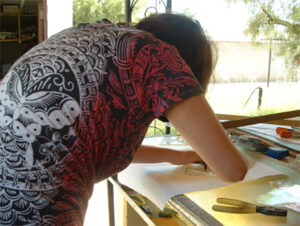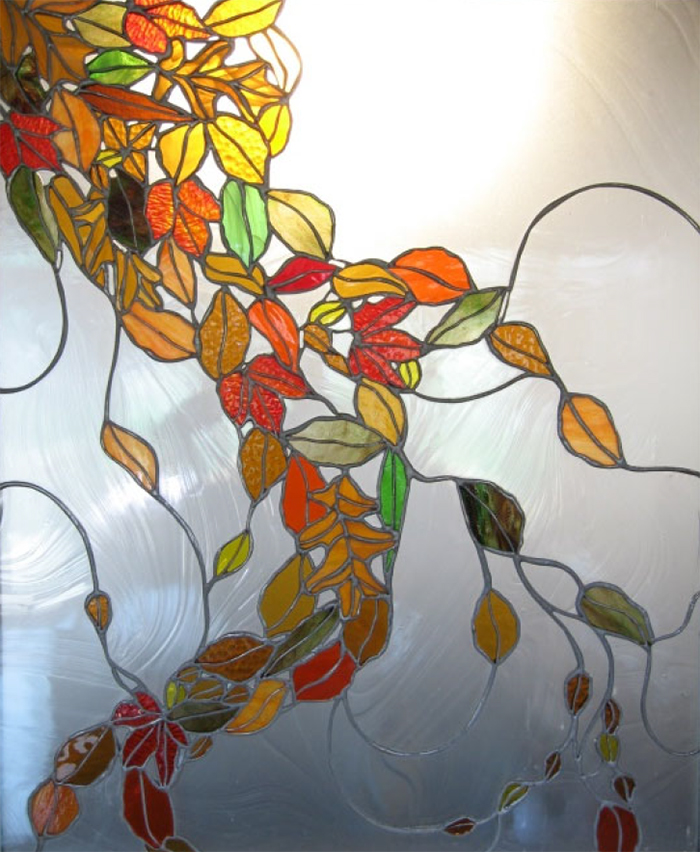The Stained Glass Process
For thousands of years, stained glass has been a focal point of our finest architecture. Today, it can be an affordable addition to your home.
The Stained Glass Pattern
Every window, skylight, sun catcher…every stained glass project…begins with the pattern. As you can see below, it actually increases to two patterns: one is the cutting copy and one is called a ‘leading copy’ for putting the pieces on after they are cut but before they are sanded and foiled or leaded then returned to the leading copy to be soldered together to make many pieces of glass one large complete window.
“People are like stained-glass windows. They sparkle and shine when the sun is out, but when the darkness sets in, their true beauty is revealed only if there is a light within.”
– – Elizabeth Kubler-Ross


Cutting Glass Pieces
The next step, of course, is to cut out each piece. I prefer using a light box rather than cut out each piece of the pattern, glue it on a piece of glass then cut it. It is more accurate and saves a lot of, what I view as, wasted time doing an unnecessary step. Others may disagree, but this is my chosen method. Glass isn’t really “cut”, rather it is scored, then broken apart on the score lines. Each piece of glass in a project goes through many steps and is given much time before completion.
 “Cutting” the glass on a light box.
“Cutting” the glass on a light box.

“Cutting” the glass on a light box.

Breaking away the unwanted glass.
Using a four inch bench sander with rubber wheels and fitted sanding belts is an accurate way to true the perimeter of each glass piece before foiling. Sanding the edges ensures that no cuts or slices come from sharp glass when applying the copper foil or edging the piece with lead came.

Foiling takes patience to achieve accuracy but is worth the frustration when the skill is finally mastered. The goal is to get the foil equidistance on each side of the glass.

After sanding and foiling, the pieces are returned to the leading copy for soldering.

Stained Glass Soldering
Soldering is almost the final step to completing a stained glass project. The soldering holds all the pieces together inside a frame of lead or zinc, plus it is the first impression of quality. The design could be perfect and the choice of colors and textures perfect, but if the soldering isn’t perfect the whole effort falls short of spectacular. It even falls short of “it’s nice but something isn’t right.” Or “I almost like it but something isn’t right.” Soldering is always in the timing of how long to keep the heat on the solder so it flows evenly and joins completely the sides of glass.


The last step, of course, is cleaning the window. Not very glamorous, for sure, but if the window isn’t sparkling clean, there again, the beauty of the creation cannot be appreciated.
 After all these steps, a completed piece is revealed.
After all these steps, a completed piece is revealed.
Address
Call for Appointment
Tucson, Arizona 85711-5204
Call
520-241-4733
